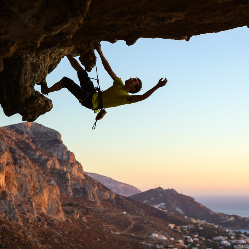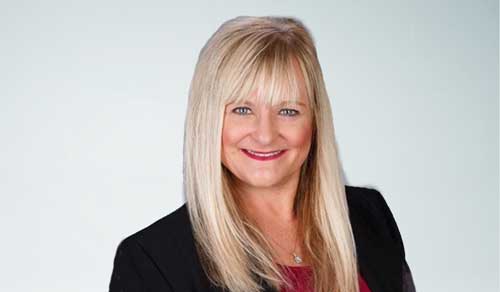Off the field
If on-the-field issues affecting a player’s insurability have evolved, what about off-the-field risk factors?
The proliferation of social media coupled with advancements in smartphone technology has made it much easier to research a player’s lifestyle risks. Simply put: There’s not much you can do as a professional athlete on or off the field that isn’t caught on camera.
Perhaps because of that – and surprising to many – the professional sports world is statistically less violent than the rest of the country. NFL players, for example, are more law-abiding than their non-athletic counterparts, some studies suggest.
A 2011 database created by the San Diego Union-Tribune found that 1 in 45 NFL players was arrested.2 The national average was more than 36% higher — 1 in 33, according to 2019 FBI statistics, the latest year for which data is available.3 This is a great reminder to put aside internal biases when underwriting, whether the person is a high-profile professional athlete or an ordinary citizen, and to perform due diligence to help determine who is a good risk and who is not.
The NIL wild card
One of the biggest changes in insuring athletes over the past several years has been the increasing number of young people, including teenagers, with income levels that require special risk underwriting.
The NCAA established the concept of amateur athletics with its formation in 1906. The model for more than a century was built around athletes playing for colleges in return for an education. They could not legally receive pay for their performances, and schools that were caught skirting this system were punished in a variety of ways including, in the case of Southern Methodist University in 1987, the suspension of its football program for an entire season.
That model is dead.
The new model is currently evolving. For a few years, it centered on the concept of NIL – Name, Image, and Likeness – which gave the athlete the right to be compensated for his or her contributions to a school’s athletic program. This money could come through a third party from things such as autographs, personal appearances, camps and clinics, podcasting, and product endorsements.
The king of the NIL market was actually a prince – the son of the NBA’s King (LeBron) James.
Bronny James spent one season at the University of Southern California, where he averaged just 4.8 points, 2.8 rebounds, and 2.1 assists per game but made $5 million in NIL money as a 19-year-old. Ironically, his lone collegiate season was delayed after he suffered sudden cardiac arrest during a USC preseason practice and underwent a procedure to treat a congenital heart defect.
Following Bronny on this NIL gravy train were:
2. Shadeur Sanders, University of Colorado football, $4.7 million
3. Livvy Dunne, Louisiana State University gymnastics, $3.5 million
4. Caitlin Clark, University of Iowa basketball, $3.1 million
5. Arch Manning, University of Texas football, $2.8 million
And now the NIL model itself might soon become extinct.
In late May, the NCAA and its five most influential conferences agreed to allow schools to directly pay players, eliminating the need for the third-party middle person. The move came as part of a $2.7 billion settlement in which the NCAA agreed to pay damages over 10 years to past and current athletes.4 The settlement also included a revenue-sharing plan expected to begin in the fall of 2025 allowing each school to directly share up to roughly $20 million per year with its athletes.5
Once again, when insuring athletes who have yet to play in a professional sports league, it comes down to due diligence. But it isn’t just about the player’s on-the-field performance. Often, it’s more about the athlete’s ability to influence others in their purchasing decisions.
The Livvy Dunne experience
Just about every basketball fan of a certain age has a story regarding Michael Jordan’s on-court prowess. Not many gymnastics fans can point to any particular routine of Livvy Dunne that wowed a crowd.
Dunne, a gymnast competing for LSU, is more famous for being an influencer than an athlete. She started a TikTok channel in 2020 and initially posted videos of her gymnastics. Then, she began branching out to other areas of her life.
Today, she is the most-followed NCAA athlete, with nearly 8 million followers on TiKTok and more than 5 million on Instagram. In May 2024, she signed a multimillion-dollar deal with Passes, a leading content creator platform designed to help creators diversify their revenue streams. She already has endorsement deals with, among others, ESPN, BodyArmor, Motorola, Grubhub, American Eagle Outfitters, and Forever 21.
The challenges with this type of special risk case are many. For example, public attention can be fleeting, and influencer income streams can dry up rapidly. Additionally, it can be challenging to verify influencers’ actual income and where that money is going because most are self-employed contractors.
Despite the differences between professional athletes and influencers, the foundational principle of due diligence remains central to assessing risk for both groups.
The final buzzer
Challenges abound when underwriting special risks. Yet, as with all risk, the solution lies in gathering sufficient data to make informed decisions. In other words, all roads lead back to where we started – due diligence.
When facing one of these cases, underwriters should take all steps necessary to understand potentially complicating factors such as:
- The health and wellness of the individual;
- Career stability and longevity in the particular sport or endeavor;
- The applicant’s online presence, brand, business, and content;
- The potential impact of negative publicity or scandals, making sure to put any biases aside.
Also, underwriters should understand that very few high-profile professional athletes today are merely athletes. They are entertainers and influencers, as well, and the changing landscape at the college level is only making this more blurred and complex.
For more information about underwriting special risks, turn to the experts at RGA. Contact us today.




